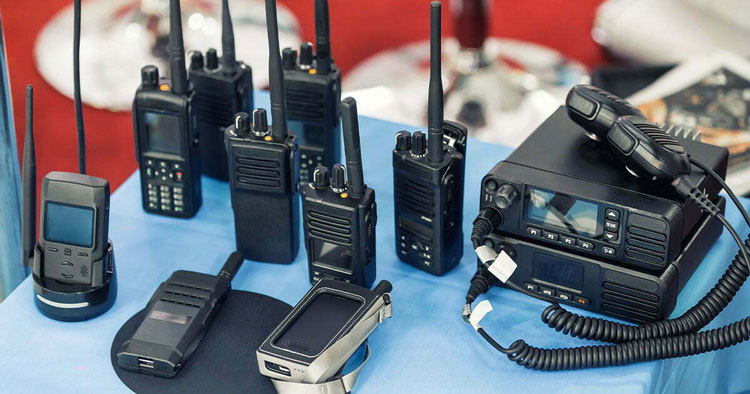What is an Analog Walkie-Talkie?
An analog walkie-talkie, also known as a traditional walkie-talkie, is a communication device designed using analog communication technology. It modulates stored signals onto the walkie-talkie's transmission frequency. Analog walkie-talkies have played an irreplaceable role in the development of wireless radio communication.

Principles of Analog Walkie-Talkies
Analog walkie-talkies operate on the principle of modulating audio signals captured by a microphone into corresponding high-frequency or radio frequency signals through a frequency modulation circuit. These signals are then amplified to the required output power and transmitted through an antenna via a transmit/receive switch. In the receiving path, signals received by the antenna are filtered through a low-pass filter, amplified, and then downconverted to the first intermediate frequency through mixing circuits. After filtering and amplification, the signal is sent to the relevant integrated demodulation chip, which performs a second downconversion to the second intermediate frequency. Finally, the signal is demodulated to extract the audio signal, which is then amplified and sent to the speaker for output. Analog walkie-talkies typically operate in half-duplex mode, using either the same frequency or different frequencies for transmitting and receiving.
Signal Reception in Analog Walkie-Talkies
The reception process in analog walkie-talkies involves a double downconversion superheterodyne approach. Signals received from the antenna pass through transmit/receive conversion circuits and bandpass filters before being subjected to radio frequency amplification. After further bandpass filtering, the signal enters the first mixer, where it is mixed with the first local oscillator signal generated by the phase-locked loop frequency synthesizer circuit. This process produces the first intermediate frequency signal.
The first intermediate frequency signal undergoes additional filtering with crystal filters to remove unwanted interference. It is then processed by the intermediate frequency processing chip and mixed again with the second local oscillator signal to generate the second intermediate frequency signal. After further filtering and amplification, the signal is demodulated to produce the audio signal. The audio signal passes through amplification, bandpass filtering, de-emphasis, and other circuits before entering the volume control circuit and power amplifier, which drives the speaker to provide the desired audio output. Control signals from the microphone are converted into electrical audio signals and modulated directly using a voltage-controlled oscillator.
Differences Between Analog and Digital Walkie-Talkies
In the field of walkie-talkie design, there are two primary categories: analog walkie-talkies, which use analog communication technology, and digital walkie-talkies, which are designed using digital technology. Analog walkie-talkies modulate stored signals onto the transmission frequency, while digital walkie-talkies digitize voice information and transmit it in digital encoded form on the transmission frequency.
Digital walkie-talkies offer several advantages. They can make more efficient use of spectrum resources, accommodating more users on a given channel, which improves spectrum utilization. They also provide enhanced call quality due to error correction capabilities of digital communication technology, resulting in clearer audio with less noise. Furthermore, they offer improved integration of voice and data services, overcoming the limitation of decreasing control signal quality with increasing communication distance.
Despite the promising future of digital walkie-talkies, analog technology remains mature and reliable. Analog technology is currently dominant in walkie-talkie production, especially in the low- to mid-range market segments. The transition from analog to digital is seen as a gradual process that reflects the technical capabilities and strengths of the companies involved. This transition is also an opportunity to phase out weaker players in the industry.
While digital walkie-talkies have potential, their higher cost and the need to establish a market presence make it a long-term process before they can fully replace analog walkie-talkies. In many regions, analog walkie-talkies are well-established and meet the requirements of various user segments in terms of call quality, basic functionality, and cost-effectiveness.
In conclusion, it is premature to discuss the obsolescence of analog walkie-talkies or the complete replacement by digital walkie-talkies. Market dynamics and user preferences will determine the outcome.

